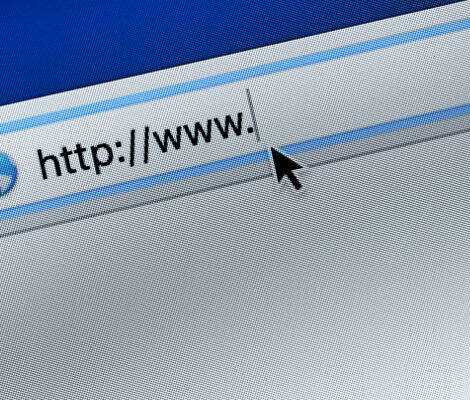The legality of the circulation of e-newspapers
Introduction
The world has transformed with the advent of industrialization and globalization. People’s lives have been streamlined by the growth of the internet, which allows them to connect, commerce, meet, and share documentaries through an online manner. When the country was struck by an unprecedented outbreak of Covid-19, the value of the internet was recognized. The business and governmental sectors both changed their work to an online medium after two months of not working and a significant financial loss. Among all of these developments, the newspaper business had a problem in which many news stations made their information available on their websites for free or for a fee. With all of these restrictions in place and newspapers being made available online, the legality of electronic newspaper circulation has been called into doubt. This prompted the Indian Newspapers Association to issue an advice in order to safeguard the industry’s interests and rights. In situations when there is any circulation of electronic newspapers, the industry stipulated that legal action be taken against any individual or persons. Furthermore, the society claimed that measures should be made to limit the number of files available for download, as well as the implementation of a feature called identifiable user code, which would aid in tracking persons involved in the transmission of newspapers via pdf.
Classification of Electronic Newspapers
Electronic newspapers have been defined as newspapers that are published and distributed in the public domain using electronic means. However, there are specific rules and limitations that newspapers must adhere to while making their content available to the public. The publications have been divided into numerous categories in order to impose contractual obligations on the user. The two forms of electronic newspapers are:
- The newspapers having an adequate set of terms and conditions or the user agreement: This is the kind of newspapers which adequately specify the terms of their usage. These conditions mainly include the articles which can be shared through social media platforms, limiting the downloading of pdf generated files and that the pages of the newspapers cannot be printed and forwarded and cropped. The well-known newspaper sites such as ‘The Hindu’ and the ‘Times of India’ have specified their terms of usage.
- The newspapers with no adequate set of terms and conditions or the user agreement: This is the type of newspaper where the terms of usage are not specified. It is the type of newspaper that makes its content available for free, and in such cases, the pdf has been made available for downloading the newspaper, and as a result, no personally identifiable information about the user is required.
Legality of Electronic Newspapers
a. Copyright Law
The law of copyright has been introduced with the primary intent for protecting the rights of the original owner, his neighboring rights and also subsequently deals with the subject of public interest and tries to strike a balance between the two in a digital environment. The newspapers have been protected under Section 13 of the Copyright Act, 1957 which extends its protection to the original literary works. Any kind of a literary work, which subsists the features of originality has been protected by the Act. On the other hand, the protection of copyright cannot be claimed if any kind of a news items, facts, information or a mere discovery is known to someone. The protection to such facts, items can only subsist if such work or information is used in a work and is compiled in the form articles and newspapers with an established amounts of skill, labour, and capital. Thus, if the newspapers are guaranteed protection under Section 13, then in the similar way, all the electronic pdfs and electronic newspapers are guaranteed protection under Section 14 of the Copyright Act, 1957. Henceforth, the owners of the work i.e., the author of the newspapers have an exclusive right from preventing the other parties from copying, publishing and communicating the work to the public. In case, any of the person or the parties try to copy, publish or communicate the work of the original owners without their consent and permission, then the owners have the right for claiming compensation for up surging the original work of the owners. The exclusive rights which are guaranteed under Section 14 of the Act are not absolute in nature and are subject to fair dealing. Section 51 of the Copyright Act deals with copyright infringement, which states that the infringement would take place when the exclusive rights of the owners of copyright are exercised by the infringer without the prior permission and consent of the owner. The person who has committed the offence of copyright infringement would be liable for imprisonment for a term of less than six months, which would extend to three years and can also be imposed with a fine of not less than fifty thousand.
b. Information Technology Act
The copyright law exclusively deals with the illegal acts of copyright infringement. However, Section 43(a) of the Information Technology Act, 2000[1] can also be imposed in cases wherein the viewer of any website downloads the already copyrighted material from the original site of the owner and further uses, copies or makes to available to the public at large without any proper authorization from the owner. In such cases, Section 43 and Section 66 of the Act are further referred for compliance.
Stance of the Judiciary in cases of Circulation of E-Papers
The courts have presented a very active and a just stand in the case of issues involving the circulation of electronic newspapers. Some of the few cases can be summarized below:
i. Bennett, Coleman & Company Limited & Another Vs. Mr. Ajay Kumar & Others[2]
The plaintiffs namely Bennett, Coleman & Company Limited and Another were the original owners and authors of the sites Times of India and Economic Times, and used to produce the content through both the offline and online mediums. The disputes arose between the parties, when it came under the notice of the plaintiffs that the defendants were using the original content from their sites and publishing them on their site namely www.sscias.com, before 6am, which affected the readership of the papers, circulation and advertising newspapers. Aggrieved by the actions of the defendants, the plaintiffs filed a suit for trademark infringement, copyright infringement and unfair competition against the defendants in the Delhi High Court. The Delhi High Court passed an order of injunction, thereby restraining the defendants from using the original content from the ‘Times of India’ and ‘Economic Times’ from their website. They were also restrained from copying or downloading any content from the site of the newspapers.
ii. Jagran Prakashan Limited v. Telegram FZ LLC & Others[3]
The plaintiffs namely Jagran Prakashan Limited are a leading newspaper publishing company, and are the original authors and owners of the well-known newspaper named ‘Dainik Jagran’ in Hindi, and has subsequently registered trademarks for the same in the classes 16, 35, 41 and 42 of the NICE classification. The publication house provides the newspapers to the public at large either in the physical form or in the form of digital version, which can be accessed from their original website. The terms and conditions of the website does not allow the user for downloading the papers from the website. The defendants who were the proprietors of the messaging service called Telegram allowed the users for the purpose of downloading the content of the newspapers, and therefore the users started various channels with the same name as that of the plaintiffs and made the content available to the public at large via pdf versions. The plaintiffs were aggrieved by the action of the defendants and subsequently sent a legal notice to the defendants asking them for shutting down the channels as it was leading to the infringement of their official websites. With the constant legal notices sent by the plaintiffs, the defendants did not take any action, and the plaintiffs filed a suit against the defendants in the Delhi High Court. The court took cognizance of the evidence presented by the plaintiffs and ruled in favour of the plaintiffs and granted an ad-interim injunction. The court also restrained the defendants from using the infringing channels that were acting as an infringement to the already used channels by the publication house.
Implementation of the Technological Tools
Article 11 of the World Intellectual Property Organization Copyright Treaty, 1996 have provided the member states with the right for implementing and introducing technological tools with the purpose of providing protection to their original literary works through copyright. Technological tools are the measures that can be introduced by the digital publication houses or any companies for the purpose of protecting their content from being illegally used. In compliance with Article 11, several publication houses have adopted technological tools for the purpose of protecting their digitally available content. Some of the measures are:
- The newspapers have been protected through pdf protected files, i.e., the newspapers can only be accessed digitally by an appropriate password.
- The newspapers have been provided protection with the features of ‘Publish Sensitive Information, which accords the owner with the right for protecting the pdf with the password.
- The policies of customer security have been created, which would help everyone for protecting the pdf with passwords.
- The user policies have been created which allows the user for accessing the files for a limited period of time.
Conclusion
Thus, it can be concluded by stating that with the technological advancements and developments in almost every sector, there is a requirement for addressing the issues regarding the copyright laws. The publication houses are in a dire need for amending the policies of copyright and terms of use and also there must be a mentioning of specific terms about the infringement of copyright through the circulation and sharing of the electronic newspapers.
[3] [CS(COMM) 146/2020]
[2] [CS(COMM) 21/2019]
[1] https://indiankanoon.org/doc/39800/
References:
1. https://www.bananaip.com/ip-news-center/indian-copyright-orders-and-judgments-2020-part-i/
2. https://www.indiatoday.in/fact-check/story/is-it-illegal-to-circulate-pdfs-of-epaper-1673993-2020-05-03
3. https://www.ipwatchdog.com/2020/06/27/illegal-circulation-e-newspapers-online-messaging-apps-implications-copyright-contractual-violations/id=122828/#:~:text=Legal%20Position&text=Thus%2C%20the%20PDF%20copy%20or,the%20work%20to%20the%20public.
4. https://thecompany.ninja/e-newspapers/
– Harmanpreet Kaur (Intern), Amity University, Kolkata
Disclaimer: This article is intended to provide general guidance to the subject matter. It does not contain legal advice. For any specific advice/corrections, write to [email protected]
© ZEST IP




